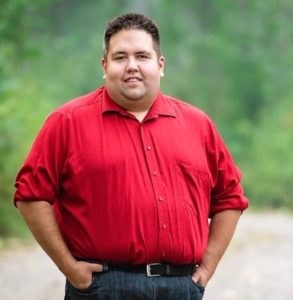As if parents don't already have enough to worry about: B.C. school districts are scrambling to find an answer to vaping.
"We are hearing from schools and students...and while we have a policy to restrict vaping in and around our schools, it's clearly not deterring the situation," warns Kathleen Karpuk, chair of the Kamloops Thompson School Board.

While health experts have warned that signs point to E-cigarettes and vaping replacing conventional cigarettes as the most serious public health nuisance of our time, the fear of the unknown has B.C. school officials on high alert.
And the primary target for this fast-developing alternative to cigarettes is kids. Young people; especially teens.
A disturbing U.S. survey recently reported in the National Institute on Drug Abuse 2018 Monitoring the Future report discovered that last year vaping by high school seniors hit 39% from 28% in 2017. Even more troubling: nicotine vaping in particular increased from 11% to 21% year over year.
Assuming can be dangerous, but it's a safe bet that the same is happening in Canada and British Columbia.
And sadly, this is happening right under our nose in schools.
School districts throughout the province are reporting that e-cigarette use has exploded, far outpacing tobacco use. And while E-cigs fall under the same disciplinary policy as tobacco smoking in most school systems, because the odour isn't as strong as tobacco smoke, scores of students most likely believe they won't get caught.
Thankfully, B.C. health officials are quite aware of this fast-developing danger. Vaping and smoking are mostly treated the same: banned in all workplaces, regulated in others. But while some provinces have set the legal vaping age at 21, the legal smoking age here is 18.
For B.C. school districts, the biggest fear is what they don't know.
"For me as a trustee, the lack of data related to long term effects is most concerning," laments Tim Bennett, chair of the Prince George School Board. He also admits that schools are seeing a new wave of vaping devices replacing bulkier e-cigarettes – and that these smaller devices are notoriously difficult to detect.

It's common knowledge in the education system that students are getting away with it in bathrooms, hallways and even classrooms.
Exactly what dangers are we talking about?
- Most e-cigarettes contain nicotine, an addictive substance that can negatively impact adolescent brain development. One Juul pod contains as much nicotine as a pack of cigarettes.
- Side effects include increased heart rate and blood pressure, lung disease, chronic bronchitis and insulin resistance leading to type 2 diabetes.
- Some e-cigarettes that claim to be nicotine-free do contain it.
- Studies have found toxic chemicals such as formaldehyde and an antifreeze ingredient in e-cigarettes.
- Almost 60% of people who use e-cigarettes also currently smoke conventional cigarettes, according to the U.S. Centers for Disease Control and Prevention.
- The vapour exhaled by e-cigarette users contains carcinogens and is a risk to nearby nonusers, just like secondhand tobacco smoke.
So what do we do about it? The simple answer: A lot more than what we are doing right now.
Where does the buck stop? Regrettably, there appears to be a lack of leadership. Teachers are awaiting direction from principals; principals are awaiting direction from school districts; school districts are awaiting direction from the Ministry of Education, and everyone is awaiting action from the Ministry of Health.
Not surprisingly, the fast-rising use of e-cigarettes by young people is getting notice in the B.C. Legislature. The opposition recently unveiled a list of proposals for the government to consider, noting that several of their ideas have come from young people.
- Ban flavoured vapes - which may require federal government action.
- Possibly make the unflavoured ones less tasty – this is not a product that can be easily produced as contraband, as is the case for cigarettes.
- Crack down on retailers targeting sales to kids – some of the teens we've heard from suggest that 14-year olds easily buy them at retail outlets.
- Education: Info session for grade 7-8 – possibly led by Grade 11-12 students.
- Fund counter addiction groups, just like CounterAttack Clubs were funded after 1992 and were very successful in making drunk driving VERY uncool.
The bottom line: While concerns surrounding the long-term effects of vaping await definitive scientific research, for now, a wise adage appears to apply: What you don't know can hurt you.
Or as the Brownsville Station hit from 1973 goes:
"Now, teacher don't you fill me up with your rules.
But everybody knows that smokin' ain't allowed in school"
As always, I welcome your comments and criticism on Twitter: @kammornanchor
Bob Price is a veteran B.C. broadcaster who anchored the morning news on CHNL radio in Kamloops for the past 30 years. Bob is also a past Webster Award winner whose previous stops included Vancouver and Calgary.


